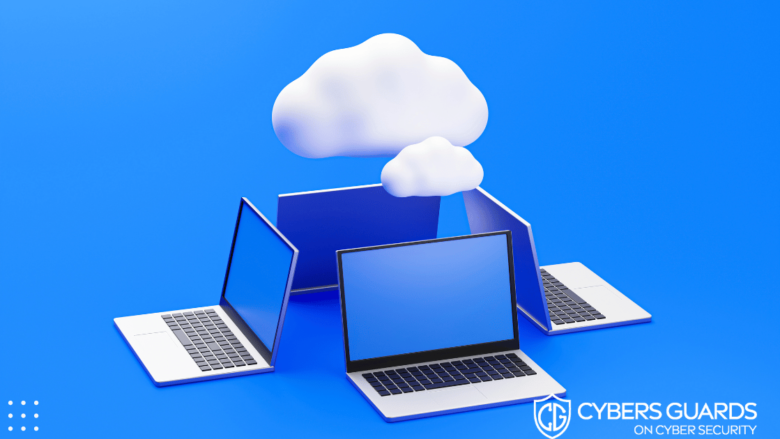Continuously monitor identities and entitlements to understand who has access to which cloud infrastructure resources and applications. Gaining greater visibility enables teams to implement best practice security policies, enforce least privilege access even within complex multicloud environments, and apply best practice security policies accordingly.
Increase granular entitlement visibility and automatically remediate anomalous permissions to achieve least privilege. Unlike traditional security solutions such as CASBs, CIEM is designed specifically to address entitlement issues in the cloud.
Visibility
Monitoring and securing access for thousands of identities, infrastructure resources and cloud accounts within an enterprise is almost impossible without CIEM technology. By providing visibility into net effective permissions granted to users and workloads, security teams can identify risks from overly permissive access policies more quickly.
CIEM integrates user and machine behavior analytics (UEBA), identity access management (IAM), and multicloud governance to reduce attack surfaces and ensure compliance. This approach allows security and audit teams to implement policies at scale and real-time for any cloud service provider and across their organization.
Organizations often turn to IAM and PAM solutions to manage their cloud systems; however, these don’t provide a holistic view of access environments. With CIEM tools however, organizations can visualize entitlements between users, human identities, and cloud resources; analyze entitlement landscapes to expose risks or detect threats; enforce least privilege access as required, as well as enforce least privilege access tiers for more secure environments.
A CIEM tool can also automate the discovery of identities and their associated permissions in cloud-native applications, OT machines and IoT devices. Once identified, this CIEM tool can evaluate whether IAM privileges assigned for each workload meet its intended purpose – or not – automatically correcting them to comply with least privilege policy if not.
Unnecessary IAM policies leave your organization open to cyber attacks. This risk becomes especially concerning in multicloud environments with competing features offered by providers and services. CIEM solutions can automatically identify these policies, monitor them for anomalous behaviors that might indicate compromise, and alert administrators of possible compromise.
Legacy Identity Access Management (IAM) tools often rely on manual workarounds or integrations for multicloud security management, while CIEM solutions like StrongDM integrate directly with cloud service providers’ management APIs and their respective management APIs for seamless security management processes across on-prem and cloud platforms – thus simplifying multicloud security management processes while meeting compliance while alleviating staff burden and speeding digital transformation efforts.
Oversight
As with many aspects of cloud security, entitlements are constantly changing; tracking their progression can be challenging. CIEM solutions provide constant and granular visibility into cloud permissions to monitor and remediate access risks on an enterprise-wide scale.
Entitlement management allows teams to easily implement least privilege policies across an enterprise by identifying exactly which access is needed for tasks and maintaining compliance posture. Entitlement management reduces risks of unauthorised sharing and data breaches by outlining fine-grained, context-rich entitlements for each identity; then assesses actual permissions against entitlements so as to detect overly permissive access permissions, then automatically remediates those permissions reducing attack surface.
CIEM is an integral component of an overall cloud security strategy. Paired with other solutions like cloud-native application protection platform (CNAPP), container security and cloud security posture manager (CSPM), it gives organizations a holistic view of their access configuration across multi-cloud environments.
Implementation of CIEM should encompass access governance and zero trust access as the basis for upholding least privilege principles and mitigating cloud security risks. Furthermore, SIEM should work alongside CIEM to collect and prioritize security alerts that identify anomalous behavior as well as provide threat detection, investigation, and response capabilities.
Contrary to legacy PAM tools, CIEM tools allow organizations to effectively identify and control the rights of human users, devices, and artificial intelligence that access cloud services. Furthermore, these CIEM solutions employ advanced analytics as well as user and entity behavior analysis (UEBA).
The CIEM solution can also assist your DevOps team in mitigating cloud risk by providing them with a central overview of entitlements, making it simpler to identify who has what access in the cloud, and eliminating unnecessary permissions. This enables faster workflows without disrupting security – freeing up time for innovation and speed – which in turn enables businesses to establish continuous deployment culture while improving cloud infrastructure quality.
Governance
Governance is at the core of cloud infrastructure entitlement management (CIEM). This involves making sure permissions are properly granted or removed according to dynamic environments, adhering to least privilege principles, and monitoring who and what accesses your cloud environment and uses any resources provided to them. CIEM must therefore know who accesses it, what resources they access and their intended use.
As enterprises increasingly move toward multi-cloud strategies, the task of access control becomes even more complex. Beyond access points and platforms’ respective policies and access controls, hybrid environments pose additional complexities that CIEM can assist with by providing consistent application of access rights across them all.
To do this, CIEM solutions must include discovery and identification features to quickly detect every person (human or nonhuman) accessing cloud infrastructure resources. They should also provide a view of entitlements landscape to identify risks as well as an automatic mechanism for detecting anomalous activity; additionally revoke unused entitlements should also be possible with proper tools supporting audit and remediation capabilities that allow teams to act when they identify a security risk.
A great CIEM solution will provide an integrated framework that connects with other PAM and identity-centric solutions to manage security across an enterprise. This will simplify provisioning and revoking, enforce consistency in policies and reduce risks of unapproved actions that might otherwise go undetected.
At present, cloud environments with thousands of users and services, tens of thousands of assets and multiple entitlements present a substantial challenge to human teams who attempt to maintain visibility and control of potential unauthorized activity. An effective CIEM solution must therefore automate these processes using principles like least privilege and adaptive access control for enhanced security measures and mitigating threats.
Compliance
Cloud infrastructures are complex environments with thousands of resources and millions of entitlements that must be managed. An effective CIEM solution utilizes machine learning and artificial intelligence to automate entitlement monitoring, alerts, and remediation; freeing human teams up for other security initiatives like threat hunting and compliance with regulations like GDPR or HIPAA.
CIEM increases business agility and speed by consolidating identity access management (IAM) across multi-cloud platforms into one centralized platform. It brings identities and entitlements from AWS, Azure, GCP and other CSPs together into a single view for easy permission management with consistency and accuracy; additionally providing visibility that ensures audit readiness and security for your organization.
With CIEM, you can visualize all human and nonhuman identities and entitlements; analyze the entitlement landscape for risk; remove unused privileges to reduce them, as well as enforce least privilege policies to lower risks and promote productivity by eliminating unauthorized access rights from threat actors. This helps eliminate productivity roadblocks caused by unnecessary access rights as well as eliminating potential productivity roadblocks caused by unnecessary access rights that inhibit productivity.
CIEM also ensures cloud environments are audit-ready and compliant with regulations like GDPR and HIPAA by monitoring for suspicious activity. It detects anomalous and malicious activity, alerts teams of any unauthorized changes made in real time, and automatically revokes unused permissions that have lapsed.
Cloud data centers differ significantly from their on-premises counterparts in that they’re far more dynamic and ever-evolving, meaning resources may be provisioned or deprovisioned at any given moment based on demand and workload. As such, this dynamic environment necessitates an proactive approach to entitlement management that applies the principle of least privilege instantly across all resources in real-time – which CIEM solutions are specifically designed for.
A Cyber Incident Event Monitor (CIEM) is an integral component of your cybersecurity posture management (CWPP) or cloud security posture management (CSPM) platform, and should complement other foundational privileged access management (PAM) capabilities such as secrets management and least privilege. Together they help strengthen security, mitigate risks and speed adoption of new technologies by identifying entitlement gaps – delivering visibility, control, and agility necessary to safeguard digital transformation initiatives.











FIND US ON SOCIALS